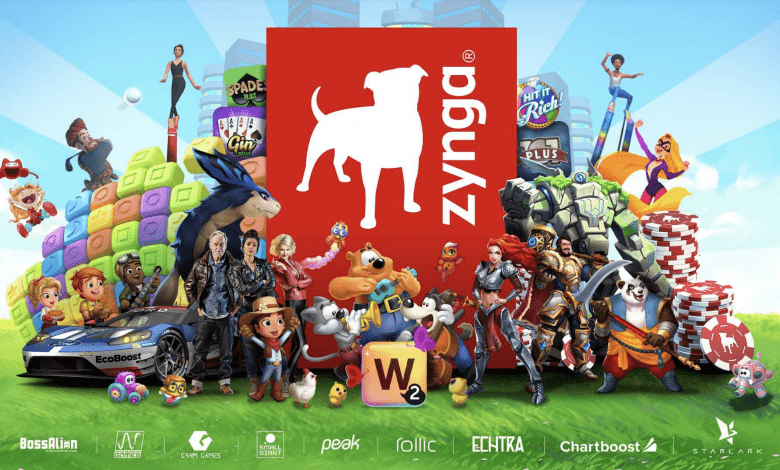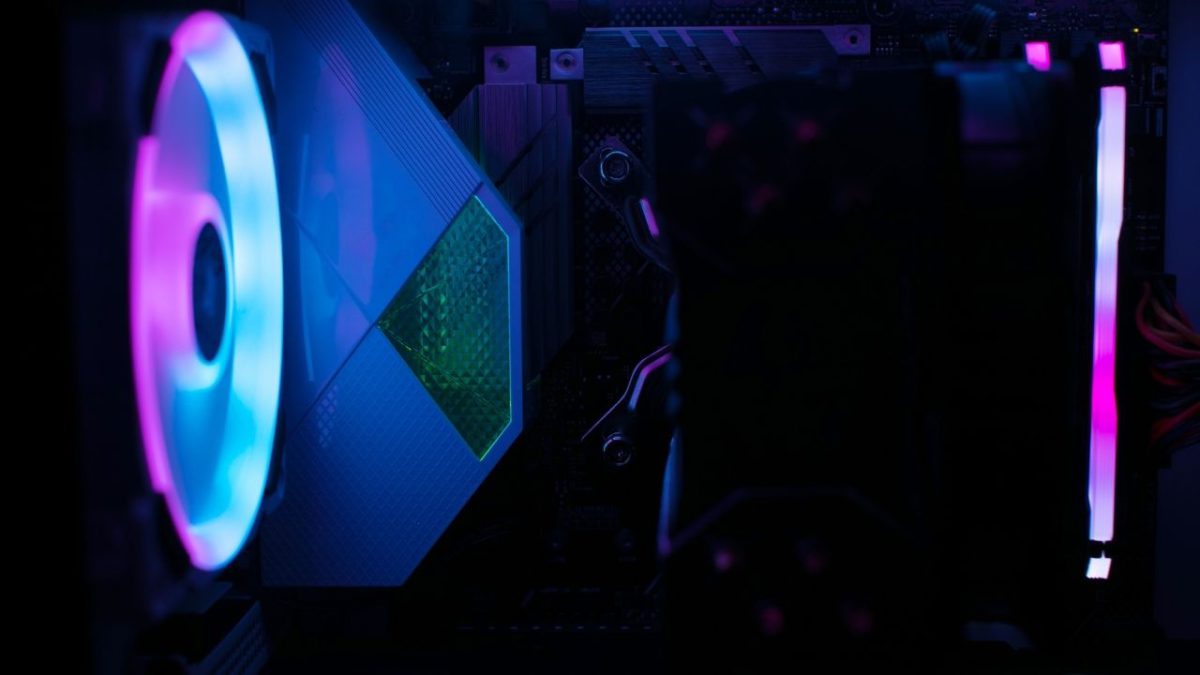How AI (Artificial Intelligence) Will Change The Future Of Gaming
Artificial Intelligence (AI) refers to the simulation of human intelligence in machines that are programmed to think and learn like humans. It is a multidisciplinary field of study that combines computer science, mathematics, statistics, cognitive science, and various other disciplines to develop intelligent systems capable of performing tasks that typically require human intelligence.
AI systems are designed to perceive their environment, reason about the information they gather, and make decisions or take actions to achieve specific goals. These systems use algorithms and models to process and analyze data, recognize patterns, and learn from their experiences, allowing them to improve their performance over time. AI can be broadly categorized into two types: Narrow AI and General AI.
1. Narrow AI: Also known as Weak AI, Narrow AI is designed to perform specific tasks within a limited domain. Examples of Narrow AI include speech recognition systems, image recognition software, recommendation algorithms, virtual personal assistants like Siri and Alexa, and autonomous vehicles. These systems are highly specialized and excel in their specific area but lack the general intelligence exhibited by humans.
2. General AI: General AI refers to the concept of AI systems that possess the ability to understand, learn, and apply knowledge across a wide range of tasks and domains, similar to human intelligence. General AI aims to replicate human-like cognitive abilities, including reasoning, problem-solving, natural language understanding, and abstract thinking. Achieving General AI is still a significant challenge, and researchers continue to work towards developing systems that can exhibit such capabilities.
AI techniques can be broadly classified into the following categories:
1. Machine Learning (ML): Machine Learning is a subset of AI that focuses on developing algorithms and models that enable systems to learn from data and make predictions or decisions without being explicitly programmed. It involves training models on labeled or unlabeled data, allowing them to discover patterns and relationships. Supervised learning, unsupervised learning, and reinforcement learning are common approaches within machine learning.
2. Deep Learning: Deep Learning is a subfield of machine learning that uses artificial neural networks, inspired by the structure and function of the human brain, to process and analyze complex data. Deep learning models, known as deep neural networks, consist of multiple layers of interconnected nodes (neurons) that transform input data and progressively extract higher-level features. Deep learning has achieved significant breakthroughs in areas such as image recognition, natural language processing, and speech synthesis.
3. Natural Language Processing (NLP): Natural Language Processing focuses on enabling computers to understand, interpret, and generate human language. It involves techniques such as text parsing, sentiment analysis, language translation, and question-answering systems. NLP is essential for applications like chatbots, virtual assistants, and language translation services.
4. Computer Vision: Computer Vision involves enabling machines to interpret and understand visual information from images or videos. It encompasses tasks such as object recognition, image classification, object detection, image segmentation, and video analysis. Computer vision finds applications in autonomous vehicles, surveillance systems, medical imaging, and augmented reality.
5. Robotics: Robotics combines AI and engineering to create intelligent machines capable of interacting with the physical world. AI techniques enable robots to perceive and interpret sensory data, plan and execute actions, and adapt to changing environments. Robotics finds applications in manufacturing, healthcare, exploration, and various other industries.
The impact of AI is felt across numerous sectors, including healthcare, finance, transportation, entertainment, education, and more. While AI brings numerous benefits such as increased efficiency, automation, and improved decision-making, it also raises ethical and societal concerns. Issues like privacy, job displacement, bias in algorithms, and the responsibility of autonomous systems are areas of ongoing research and debate.
Overall, AI represents a transformative technology with the potential to revolutionize industries, augment human capabilities, and shape the future of society.
Another incredible project to make games with AI in threejs, YUKA.
Huge number of opensource projects on github for bots, FPS, savegames and navmeshs. A jewel for web gaming with threejs !
▶️ https://t.co/DuwsYQrLdm pic.twitter.com/ERbqSpsN9W
— Azdin (@Azdinmediri) June 18, 2023
How are AI and Gaming Related
Artificial Intelligence (AI) and gaming have a strong relationship, with AI playing a significant role in shaping the gaming industry. The integration of AI technologies in gaming has transformed the way games are designed, developed, and experienced. Here are some key aspects that highlight the relationship between AI and gaming:
1. Intelligent Non-Player Characters (NPCs): AI enables the creation of intelligent and lifelike NPCs in games. NPCs powered by AI algorithms can exhibit complex behaviors, decision-making, and interactions with players. They can adapt their strategies, learn from player actions, and provide dynamic and challenging gameplay experiences. AI-driven NPCs enhance immersion, making the game world feel more alive and responsive.
2. Adaptive Gameplay and Difficulty: AI allows for adaptive gameplay experiences by dynamically adjusting the game’s difficulty based on player performance and preferences. AI algorithms can analyze player behavior, skill level, and historical data to personalize the gameplay experience. This ensures that players are appropriately challenged, leading to a more engaging and enjoyable experience.
3. Procedural Content Generation: AI techniques, such as procedural generation, are used to automatically generate game content. AI algorithms can create randomized or algorithmically designed content, including landscapes, environments, levels, quests, and items. This approach provides endless variations, increases content diversity, and enhances replayability, as each playthrough offers unique experiences.
4. Realistic Enemy Behaviors: AI plays a crucial role in developing intelligent and challenging enemy behaviors in games. AI-powered enemies can analyze the game environment, predict player actions, and adapt their strategies accordingly. This creates more dynamic and engaging combat scenarios, requiring players to strategize and adapt their tactics. Realistic enemy behaviors enhance immersion and increase the excitement of gameplay.
5. Natural Language Processing (NLP) and Dialogue Systems: AI-powered NLP techniques enable games to have natural language interactions with players. This allows for advanced dialogue systems and interactive storytelling. Players can engage in conversations with NPCs, shape the narrative, and experience personalized storylines. AI-driven dialogue systems enhance immersion, making the game world feel more realistic and interactive.
6. Game Testing and Quality Assurance: AI assists in game testing and quality assurance processes. AI algorithms can automatically play through game levels, identify bugs, glitches, and balance issues, and provide valuable feedback to developers. This speeds up the testing phase, improves game quality, and ensures a smoother gameplay experience for players.
7. Personalized Gameplay Experiences: AI algorithms analyze player data, behavior, and preferences to create personalized gaming experiences. By understanding player preferences, AI can recommend suitable games, tailor in-game content, and provide personalized challenges or rewards. This enhances player satisfaction, engagement, and long-term retention.
8. Data Analytics and Insights: AI-powered analytics tools help game developers gain insights into player behavior, engagement patterns, and preferences. By analyzing data collected during gameplay, developers can understand player motivations, identify gameplay bottlenecks, and make data-driven decisions for game improvements, updates, and monetization strategies. AI analytics optimize game design, enhance player satisfaction, and drive business success.
9. Virtual and Augmented Reality Experiences: AI plays a significant role in virtual reality (VR) and augmented reality (AR) gaming experiences. AI algorithms are used for spatial mapping, object recognition, tracking, and interaction within VR/AR environments. AI enhances the realism and interactivity of these immersive experiences, creating a more captivating and engaging gameplay environment.
In summary, AI and gaming are closely related, with AI technologies shaping the way games are designed, developed, and experienced. AI enables the creation of intelligent NPCs, adaptive gameplay, procedural content generation, realistic enemy behaviors, personalized experiences, advanced analytics, and enhanced virtual and augmented reality experiences. The integration of AI in gaming enhances immersion, engagement, and overall gameplay quality, pushing the boundaries of interactive entertainment
Also read: The Rise Of Blockchain gaming: Top 10 Ways Players Can Earn More Money
Importance of AI for gaming
Artificial Intelligence (AI) has a significant impact on the gaming industry, revolutionizing the way games are designed, developed, and experienced. Here are some key aspects highlighting the importance of AI for gaming:
1. Non-Player Characters (NPCs) and Game Behavior: AI enables the creation of intelligent and lifelike NPCs that exhibit realistic behaviors, decision-making, and interactions with players. NPCs powered by AI algorithms can adapt their strategies, learn from player actions, and provide challenging gameplay experiences. This enhances immersion and engagement, making the game world feel dynamic and responsive.
2. Procedural Content Generation: AI techniques, such as procedural generation, allow game developers to generate vast amounts of content, such as landscapes, environments, levels, quests, and items. AI algorithms can create randomized or algorithmically designed content, providing endless variations and ensuring replayability. This saves development time, increases content diversity, and enhances the player’s experience.
3. Adaptive Difficulty: AI can dynamically adjust game difficulty based on player performance, ensuring an optimal balance of challenge and enjoyment. By analyzing player behavior, skill level, and preferences, AI algorithms can adapt the game’s difficulty in real-time, providing personalized and engaging gameplay experiences for players of different skill levels.
4. Natural Language Processing (NLP) and Dialogue Systems: AI-powered NLP techniques enable games to have natural language interactions with players. This facilitates the development of advanced dialogue systems and interactive storytelling. Players can engage in meaningful conversations with NPCs, shaping the narrative and experiencing personalized storylines. AI-driven dialogue systems also enhance immersion and make games feel more realistic.
5. Enemy AI and Combat Systems: AI plays a crucial role in developing intelligent and challenging enemy behaviors in games. AI-powered enemy AI can analyze the game environment, predict player actions, and adapt strategies accordingly. This results in more dynamic and engaging combat experiences, requiring players to strategize and adapt their own approaches.
6. Player Profiling and Personalization: AI algorithms can analyze player data, behavior, and preferences to create personalized experiences. By understanding player preferences, AI can recommend suitable games, tailor in-game content, and provide personalized challenges or rewards. This enhances player satisfaction, engagement, and long-term retention.
7. Realistic Physics and Simulation: AI techniques, such as physics engines and simulation models, contribute to realistic game physics and animations. These algorithms enable accurate and dynamic simulations of objects, characters, and environments, enhancing immersion and providing realistic interactions for players.
8. Game Testing and Quality Assurance: AI assists in game testing and quality assurance processes. AI algorithms can automatically play through game levels, identify bugs, glitches, and balance issues, and provide valuable feedback to developers. This accelerates the testing phase, improves game quality, and enhances overall player experience.
9. Player Behavior Analytics: AI-powered analytics tools help game developers gain insights into player behavior, preferences, and engagement patterns. By analyzing data collected during gameplay, developers can understand player motivations, identify gameplay bottlenecks, and make data-driven decisions for game improvements, updates, and monetization strategies.
10. Virtual and Augmented Reality: AI plays a crucial role in virtual reality (VR) and augmented reality (AR) gaming experiences. AI algorithms are used for spatial mapping, object recognition, and tracking in VR/AR environments, enabling realistic interactions and immersive gameplay.
In summary, AI is highly important for gaming as it enhances the overall gameplay experience by providing intelligent NPCs, adaptive difficulty, procedural content generation, realistic enemy behaviors, personalized experiences, and realistic physics. AI-driven advancements contribute to creating more immersive, engaging, and dynamic gaming worlds, captivating players and pushing the boundaries of game design and development.
Also read: How Blockchain Technology Revolutionises Gaming Industry
Benefits of using AI for gaming
The use of Artificial Intelligence (AI) in gaming brings numerous benefits that enhance the gameplay experience for both developers and players. Here are some key advantages of using AI in gaming:
1. Intelligent Non-Player Characters (NPCs): AI allows for the creation of intelligent and realistic NPCs that exhibit advanced behaviors and decision-making. NPCs powered by AI algorithms can adapt their strategies, learn from player actions, and provide challenging and dynamic interactions. This enhances immersion and engagement, making the game world feel more alive and responsive.
2. Adaptive Gameplay and Difficulty: AI enables games to dynamically adjust their gameplay and difficulty levels based on player performance and preferences. By analyzing player behavior and skill level, AI algorithms can provide tailored challenges and adaptive experiences. This ensures that players are appropriately challenged, leading to a more enjoyable and satisfying gameplay experience.
3. Procedural Content Generation: AI techniques, such as procedural generation, allow for the automatic generation of game content, such as landscapes, environments, levels, quests, and items. AI algorithms can create randomized or algorithmically designed content, resulting in endless variations and enhancing replayability. Procedural content generation saves development time, increases content diversity, and keeps players engaged.
4. Realistic Enemy Behaviors: AI enables the development of intelligent enemy behaviors that respond realistically to player actions. AI-powered enemies can analyze the game environment, predict player behavior, and adapt their strategies accordingly. This creates more challenging and engaging combat scenarios, requiring players to strategize and adapt their tactics.
5. Natural Language Processing (NLP) and Dialogue Systems: AI-powered NLP techniques enable games to have natural language interactions with players. This allows for advanced dialogue systems and interactive storytelling. Players can engage in conversations with NPCs, shape the narrative, and experience personalized storylines. AI-driven dialogue systems enhance immersion and make games feel more realistic.
6. Game Testing and Quality Assurance: AI assists in game testing and quality assurance processes. AI algorithms can automatically play through game levels, identify bugs, glitches, and balance issues, and provide valuable feedback to developers. This accelerates the testing phase, improves game quality, and ensures a smoother gameplay experience for players.
7. Personalized Gameplay Experiences: AI algorithms can analyze player data, behavior, and preferences to create personalized gaming experiences. By understanding player preferences, AI can recommend suitable games, tailor in-game content, and provide personalized challenges or rewards. This enhances player satisfaction, engagement, and long-term retention.
8. Realistic Physics and Simulations: AI techniques, such as physics engines and simulation models, contribute to realistic game physics and animations. These algorithms enable accurate and dynamic simulations of objects, characters, and environments. Realistic physics enhance immersion and provide a more authentic experience for players.
9. Advanced Analytics and Insights: AI-powered analytics tools help game developers gain insights into player behavior, engagement patterns, and preferences. By analyzing data collected during gameplay, developers can understand player motivations, identify gameplay bottlenecks, and make data-driven decisions for game improvements, updates, and monetization strategies. This helps in optimizing game design and enhancing player satisfaction.
10. Virtual and Augmented Reality Experiences: AI plays a crucial role in virtual reality (VR) and augmented reality (AR) gaming experiences. AI algorithms are used for spatial mapping, object recognition, tracking, and interaction within VR/AR environments. AI enhances the realism and interactivity of these immersive experiences, creating a more captivating and engaging gameplay environment.
In summary, AI brings numerous benefits to gaming, including intelligent NPCs, adaptive gameplay, procedural content generation, realistic enemy behaviors, personalized experiences, realistic physics, advanced analytics, and enhanced virtual and augmented reality experiences. By leveraging AI technologies, game developers can create more immersive, engaging, and dynamic gaming worlds, resulting in a more enjoyable and satisfying experience for players.
Also read: The Rise Of Blockchain gaming: Top 10 Ways Players Can Earn More Money
Risks involved in using AI for Gaming
While Artificial Intelligence (AI) brings significant benefits to the gaming industry, there are also risks and challenges associated with its use. It is crucial to be aware of these potential risks to ensure responsible and ethical AI implementation in gaming. Here are some key risks involved in using AI for gaming:
1. Unintended Behaviors and Bugs: AI systems in games may exhibit unintended behaviors or bugs that could impact gameplay negatively. AI algorithms, if not thoroughly tested or properly designed, can result in unpredictable actions, glitches, or unrealistic behaviors. These issues may lead to frustrating or unfair gameplay experiences for players.
2. Bias and Stereotyping: AI algorithms can inadvertently perpetuate bias and stereotypes. If the training data used to develop AI models contains biases, the AI system may exhibit discriminatory behavior or reinforce existing stereotypes. This can lead to unfair treatment of certain player groups, reinforcing social biases or excluding certain demographics from the gaming experience.
3. Lack of Player Agency: Over-reliance on AI-controlled elements in games may reduce player agency and the feeling of being in control. If AI systems overpower or dominate gameplay, players may feel disengaged or disempowered, leading to a less immersive and satisfying experience. Balancing AI and player agency is essential to maintaining a compelling gameplay experience.
4. Privacy and Data Security: AI-driven games often collect and process vast amounts of player data. This raises concerns about privacy and data security. If proper safeguards are not in place, there is a risk of data breaches, unauthorized access, or misuse of personal information. Game developers must prioritize data protection and adhere to privacy regulations to ensure player trust and security.
5. Ethical and Moral Dilemmas: The use of AI in gaming can present ethical and moral dilemmas. For example, AI-driven NPCs that exhibit realistic emotions or behaviors may raise questions about how players should interact with them. Game scenarios involving moral choices or sensitive topics need careful consideration to avoid promoting harmful or offensive content.
6. Algorithmic Transparency and Explainability: AI algorithms in games may lack transparency and explainability. Players might not understand why an AI character made a specific decision, leading to frustration or confusion. It is important to design AI systems that provide feedback or explanations to players, increasing transparency and fostering trust.
7. Overreliance on AI for Creativity: While AI can assist in content generation, there is a risk of overreliance on AI-generated content, resulting in a lack of human creativity and innovation. Game developers should strike a balance between leveraging AI for procedural content generation and preserving the human touch in game design to maintain originality and unique experiences.
8. Unfair Advantage in Competitive Play: If AI-powered features or systems provide an unfair advantage to certain players, it can lead to imbalanced and unfair competition. Balancing AI capabilities to ensure fair gameplay and maintaining competitive integrity is crucial to prevent frustration and maintain a level playing field.
9. Impact on Employment: The integration of AI in gaming may have implications for game development jobs. AI-driven automation could potentially reduce the need for certain roles or change the skill requirements in the industry. It is important to consider the potential impact on employment and proactively address any challenges through upskilling and retraining initiatives.
10. Addiction and Player Manipulation: AI algorithms can be designed to optimize player engagement and monetization. This may create addictive gameplay loops or manipulative strategies aimed at encouraging players to spend more time or money in the game. Balancing player enjoyment and commercial objectives while considering player well-being and ethical practices is crucial.
To mitigate these risks, it is important for game developers to prioritize ethical AI practices, conduct thorough testing, ensure diversity and fairness in training data, and implement mechanisms for player feedback and transparency. Additionally, involving players in the design and development process can provide valuable insights and perspectives to address potential risks and challenges.
https://www.youtube.com/watch?v=MpNhHI8HKuQ&pp=ygUMQUkgaW4gZ2FtaW5n
Top 10 ways AI will change the Future of Gaming
Artificial intelligence (AI) is rapidly transforming the gaming industry, and its impact is only going to grow in the years to come. Here are 10 ways AI is changing the future of gaming:
- More realistic and immersive experiences. AI is being used to create more realistic and immersive gaming experiences. For example, AI-powered graphics engines can generate stunning visuals that are indistinguishable from real life. AI is also being used to create more intelligent and lifelike non-player characters (NPCs) that can interact with players in a more natural way.
- Personalized gaming experiences. AI is being used to create personalized gaming experiences that are tailored to each individual player’s preferences. For example, AI can be used to track a player’s progress and adjust the difficulty of the game accordingly. AI can also be used to recommend new games or content that a player might enjoy.
- Enhanced game mechanics. AI is being used to enhance game mechanics in a variety of ways. For example, AI can be used to create more challenging and engaging puzzles. AI can also be used to create more dynamic and unpredictable gameplay.
- Improved game balance. AI can be used to improve game balance by ensuring that all players have a fair and enjoyable experience. For example, AI can be used to detect and punish cheaters. AI can also be used to balance the difficulty of the game based on the skill level of the players.
- Automated game testing. AI can be used to automate game testing, which can help to identify and fix bugs more quickly. This can lead to a better quality gaming experience for players.
- New types of games. AI is enabling the development of new types of games that would not be possible without it. For example, AI-powered games can be used to teach players new skills or to help them with their mental health.
- More accessible gaming. AI can be used to make gaming more accessible to people with disabilities. For example, AI can be used to provide real-time text-to-speech translation for players who are deaf or hard of hearing.
- Live streaming and esports. AI is being used to enhance live streaming and esports events. For example, AI can be used to provide real-time analysis of gameplay or to create highlight reels.
- Virtual reality and augmented reality. AI is being used to enhance virtual reality (VR) and augmented reality (AR) gaming experiences. For example, AI can be used to create more realistic and immersive VR worlds. AI can also be used to track a player’s movements in AR games and adjust the game accordingly.
- The metaverse. AI is playing a key role in the development of the metaverse, which is a virtual world where people can interact with each other and with digital content. AI is being used to create more realistic and immersive metaverse experiences.
These are just a few of the ways that AI is changing the future of gaming. As AI technology continues to develop, we can expect to see even more innovative and exciting gaming experiences in the years to come.
🎮 Ready for an adrenaline-fueled adventure? Immerse yourself in a world that captures the essence of GTA with an AI twist! #AiAnarchy where cutting-edge technology meets artistic brilliance! #Gaming #Innovation #AiArt #aiartcommunity pic.twitter.com/6XRiwSqsQ5
— ʙᴇᴡɪᴢ (@AiAnarchist) June 15, 2023
Stay informed with daily updates from Blockchain Magazine on Google News. Click here to follow us and mark as favorite: [Blockchain Magazine on Google News].
Get Blockchain Insights In Inbox
Stay ahead of the curve with expert analysis and market updates.
latest from tech
Disclaimer: Any post shared by a third-party agency are sponsored and Blockchain Magazine has no views on any such posts. The views and opinions expressed in this post are those of the clients and do not necessarily reflect the official policy or position of Blockchain Magazine. The information provided in this post is for informational purposes only and should not be considered as financial, investment, or professional advice. Blockchain Magazine does not endorse or promote any specific products, services, or companies mentioned in this posts. Readers are encouraged to conduct their own research and consult with a qualified professional before making any financial decisions. The featured image used is just a creative depiction of the title and it does not intend to hurt sentiments of any person or institution. If it hurts anyone sentiments, please do not hesitate to reach out to Blockchain Magazine.

 Bitcoin
Bitcoin  Ethereum
Ethereum  XRP
XRP  Tether
Tether  Solana
Solana  USDC
USDC  Dogecoin
Dogecoin  Cardano
Cardano  Lido Staked Ether
Lido Staked Ether  TRON
TRON  Chainlink
Chainlink  Wrapped Bitcoin
Wrapped Bitcoin  Sui
Sui  Wrapped stETH
Wrapped stETH  Avalanche
Avalanche  Stellar
Stellar  Hedera
Hedera  Toncoin
Toncoin  Shiba Inu
Shiba Inu  LEO Token
LEO Token  Hyperliquid
Hyperliquid  Bitget Token
Bitget Token  Litecoin
Litecoin  WETH
WETH  USDS
USDS  Polkadot
Polkadot  Bitcoin Cash
Bitcoin Cash  Ethena USDe
Ethena USDe  MANTRA
MANTRA  Wrapped eETH
Wrapped eETH  Uniswap
Uniswap  Ondo
Ondo  Pepe
Pepe  Monero
Monero  Aave
Aave  NEAR Protocol
NEAR Protocol  WhiteBIT Coin
WhiteBIT Coin  Mantle
Mantle  Official Trump
Official Trump  Aptos
Aptos  Dai
Dai  Internet Computer
Internet Computer  Ethereum Classic
Ethereum Classic  Bittensor
Bittensor  Cronos
Cronos  OKB
OKB  POL (ex-MATIC)
POL (ex-MATIC)  Gate
Gate 








